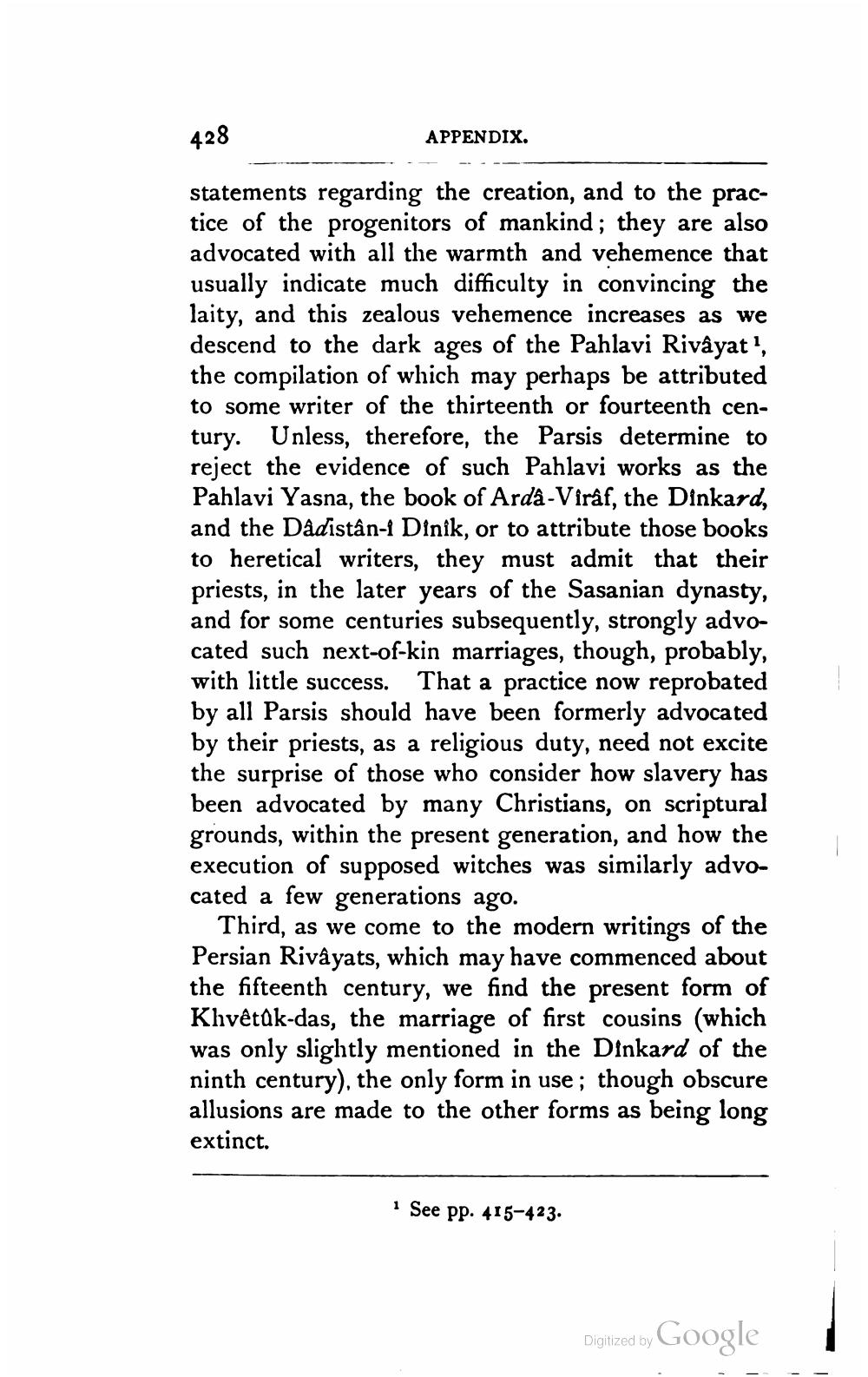________________
428
APPENDIX.
statements regarding the creation, and to the practice of the progenitors of mankind; they are also advocated with all the warmth and vehemence that usually indicate much difficulty in convincing the laity, and this zealous vehemence increases as we descend to the dark ages of the Pahlavi Rivậyat, the compilation of which may perhaps be attributed to some writer of the thirteenth or fourteenth century. Unless, therefore, the Parsis determine to reject the evidence of such Pahlavi works as the Pahlavi Yasna, the book of Ardà - Viráf, the Dinkard, and the Dådistân-i Dinik, or to attribute those books to heretical writers, they must admit that their priests, in the later years of the Sasanian dynasty, and for some centuries subsequently, strongly advocated such next-of-kin marriages, though, probably, with little success. That a practice now reprobated by all Parsis should have been formerly advocated by their priests, as a religious duty, need not excite the surprise of those who consider how slavery has been advocated by many Christians, on scriptural grounds, within the present generation, and how the execution of supposed witches was similarly advocated a few generations ago.
Third, as we come to the modern writings of the Persian Rivâyats, which may have commenced about the fifteenth century, we find the present form of Khvêtāk-das, the marriage of first cousins (which was only slightly mentioned in the Dinkard of the ninth century), the only form in use; though obscure allusions are made to the other forms as being long extinct.
See pp. 415-423.
Digitized by
Digitized by Google




